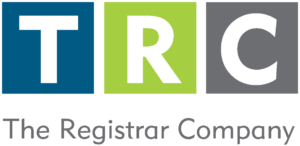To meet and improve customer satisfaction, it’s essential to monitor and measure performance by using different indicators. Performance indicators for ISO 9001:2015 are tools used for determining how and to what degree an organization is meeting guidelines, policies, objectives, requirements and targets set in their ISO 9001 QMS.
Note: These performance indicators are set by the organization and they vary from one organization to another. The team at The Registrar Company (TRC) created this list as a tool for organizations to learn from and decide which performance indicators are most suitable to the nature of their industry sector and their objectives.
What should be considered is that these indicators must be measurable and achievable. They must refer to the system’s critical processes, they must accurately represent the target to be measured, and they should be quantifiable, cost-effective, reliable and allow management to review the information in real time.
Cost Indicators
Cost indicators are performance indicators that evaluate the activities that consume economic resources in different processes. For example, the spend on energy consumption or other overhead costs, the percentage return on investments, or the percentage costs of carrying out corrections for errors are all cost indicators.
Time Indicators
Time performance indicators measure the time consumed by an activity or process and consider the time from the beginning to the end of the selected process or activity.
For example:
- Percentage number of products or services delivered on time.
- Percentage number of products or services delivered late.
Productivity Indicators
Productivity performance indicators measure the efficiency of resources in the operation. For example, the percentage of downtown a particular machine or process experiences.
Quality Indicators
Quality performance indicators measure the effectiveness of the development of activities or processes, delivering results based on the number of errors, or the number of perfect and flawless deliveries.
For example:
- Percentage number of products or services needing rework.
- Percentage of customers ‘very satisfied’.
Summary
Remember, performance indicators are set by the organization and they vary from one organization to another, and while these indicators may vary, they should serve as a tool for improving the quality of decisions regarding the processes, and the ISO 9001 QMS itself.
 Looking to expand your knowledge base? The Registrar Company, TRC, has designed over 500 courses and trained over 10,000 individuals since 1990. Our approach is based on current adult learning principles and uses proven, highly interactive participatory sessions and practical techniques that offer real behavioural change that can be implemented and applied immediately in the workplace. Learn more about training with TRC.
Looking to expand your knowledge base? The Registrar Company, TRC, has designed over 500 courses and trained over 10,000 individuals since 1990. Our approach is based on current adult learning principles and uses proven, highly interactive participatory sessions and practical techniques that offer real behavioural change that can be implemented and applied immediately in the workplace. Learn more about training with TRC.


